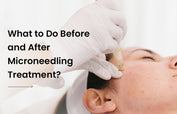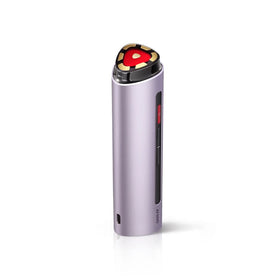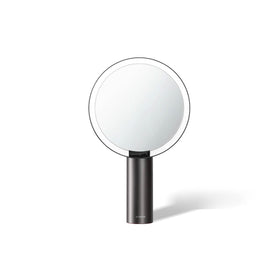射频皮肤紧缩是否安全?
随着衰老,我们的身体内外都会发生诸多变化。我们可能会注意到皱纹和皮肤松弛,尤其是在脸部、颈部和手部。虽然市面上有多种抗衰老疗法可以帮助解决这些问题,但许多人出于安全考虑而犹豫不决。
射频紧肤是一种流行的非侵入性美容疗法,利用射频能量加热皮肤并刺激胶原蛋白生成。射频技术于2001年开始用于非手术紧肤治疗,并因众多知名明星的代言而广受欢迎,提高了公众对该疗法的认知度和兴趣。这种疗法可用于改善皱纹、细纹和松弛皮肤。但它安全吗?
本文将探讨射频治疗并解答射频紧肤是否安全的问题。
安全参数和射频
射频是一种能量,其定义取决于其频率,即电磁波谱中每秒波长的数量。射频能量包括WiFi、无线电和微波等常见能量类型。
射频是一种位于频谱低端的电磁辐射。这意味着它的频率低于可见光和X射线。用于紧致皮肤的射频能量约为450千赫兹,与其他类型的射频能量相比相对较低。
紧致肌肤所用的射频 (RF) 专为治疗目的而设计,其能量输出可控。这与家用设备发射的射频不同,家用设备并非医疗用途,其控制方式也不同。
从整个电磁波谱来看,射频治疗相当安静。对于想要紧致肌肤而又不必担心有害副作用的人来说,它是一种安全的选择。
射频能量加热皮肤深层,促进胶原蛋白和弹性蛋白的生成,从而帮助紧致肌肤,焕活肌肤。与主要作用于皮肤表面的激光不同,射频能量可以更深层地渗透,改善肤色和结构。射频治疗对各种肤色都更安全,因为低频治疗不像高频激光治疗那样存在永久性变色的风险。
选择FDA批准的设备和治疗方法
为了确保安全,请务必选择经 FDA 批准的射频设备和疗法。这些设备和疗法已通过 FDA 审查和批准,这意味着它们可以安全使用。FDA 只批准 射频设备 这些设备已被证明有效且安全。请务必咨询您的临床医生,了解他们将在您身上使用的设备。
包括世界卫生组织和美国食品药品监督管理局(FDA)在内的多项研究均未发现确凿证据表明射频暴露与人类癌症风险增加相关,即使是经常接触高剂量射频的人也是如此。美国癌症协会和联邦通信委员会(FCC)均发布报告指出,虽然一些动物研究表明射频暴露在特定条件下可能与肿瘤形成有关,但这些结果尚未在人类身上得到重复,而且大多数研究并未显示射频暴露与癌症之间存在关联。
在经FDA批准的治疗中,射频能量通过允许医生监测和调整能量水平的设备进行精确控制,以确保组织达到最佳加热效果,且不会引起过热或灼伤。FDA批准的技术包含严格的方案和设备控制,以监测组织温度,确保治疗安全有效。这些措施可防止过热,并促进持续、积极的疗效。
射频紧肤的副作用
射频紧肤是一种安全的美容手术,副作用极小。最常见的副作用是暂时性皮肤发红,通常会在几小时内消退。其他可能的副作用包括肿胀、瘀伤和皮肤刺激。这些副作用通常轻微且暂时。
射频紧肤治疗的严重并发症很少见,但可能包括烧伤、水泡和皮肤颜色变化。如果操作不当,这些并发症的发生率会更高。因此,务必选择合格且经验丰富的临床医生进行治疗。
为了最大限度地降低副作用的风险,请务必在手术前后遵循临床医生的所有指示。
尝试 Amiro RF 面部护理仪
R1 Pro 抗衰老产品利用射频能量刺激胶原蛋白生成和细胞更新,令肌肤更紧致紧致。一次使用即可见效,长期使用更持久。该设备操作简便舒适,安全可靠,已通过 FCC、CE 和 PSE 认证。
此外,多重射频、EMS、LED 光和红外加热四大功能协同作用,带来专业级护肤体验。首先,在治疗区域涂抹薄薄一层凝胶或面霜。接下来,选择您的模式,从 1 档开始。逐渐增加能量等级,直到找到您感觉舒适的最高等级。为了达到最佳效果,每个区域单独治疗 5-10 分钟,每周两次。最后,外出时别忘了涂抹防晒霜。
结论
射频紧肤疗法已成为面部拉皮术的热门替代方案,因为它能够为松弛的皮肤带来类似的效果,且无需侵入性或恢复时间。该疗法可以紧致面部、颈部和身体的皮肤,并且比面部拉皮术的治疗时间更短。它是一种安全有效的改善肤质的方法,可使肌肤更紧致、更年轻。
与任何美容手术一样,请务必咨询经过委员会认证的皮肤科医生或整形外科医生,以确定它是否适合您。





